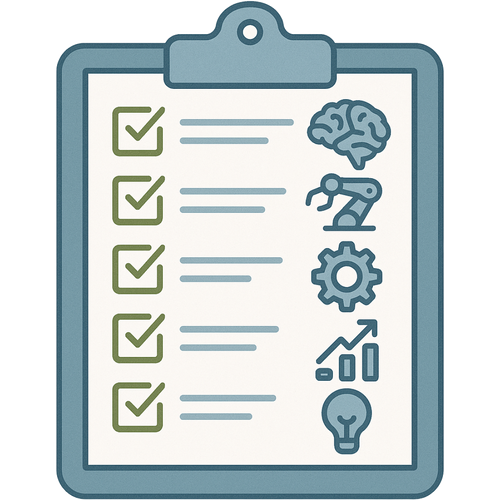How PwC’s New AI-First Training Model Signals a Paradigm Shift in Accounting
PwC’s Bold Move: Fast-Tracking Juniors into Managerial Roles PwC is radically rethinking its approach to new talent, aiming to have junior...
3 min read
Christine Hollinden : May 16, 2025 11:15:00 AM

Artificial intelligence (AI) is not a passing trend—it’s a transformative opportunity for accounting and advisory firms. Yet, real value isn’t found in flashy demos or shiny new tools. It comes from purposeful implementation aligned with your firm’s operations.
At Hollinden, we work closely with mid-market firms to navigate the AI landscape. Our approach helps firms identify meaningful use cases that reduce administrative burden, improve team efficiency, and elevate client experiences—without overwhelming internal resources.
If your team is feeling the pressure to “do something” with AI but struggling with where to begin, you’re not alone. The challenge isn’t the technology. It’s clarity and strategy. Here’s how to get started.
Begin with a clear view of how your firm works.
Rather than jumping into tools, map your core workflows across key categories:
Use these categories as the foundation for an internal audit. In each area, identify recurring tasks that:
Pro Tip: Break big tasks into micro-actions. “Client onboarding” might include “sending follow-up reminders,” or “sharing Zoom links.” This clarity sets the stage for automation.
Spot where your team spends time—but shouldn’t.
Once your process map is complete, highlight friction points:
These are prime areas for automation and AI assistance. Examples include:
Pro Tip: If it’s templated, scripted, or déjà vu, it’s likely AI-ready.
Target low-effort, high-impact opportunities.
You don’t need to overhaul your systems to see ROI. Instead, prioritize projects that are:
Examples mid-market firms are implementing now:
Pro Tip: Small wins build internal buy-in and set the stage for scale.
Use metrics to align tech adoption with business value.
Every AI project should be tied to a specific outcome. Sample goals include:
Pro Tip: Goals turn experimentation into execution and help justify further investment.
Compliance and confidentiality must guide every step.
Protect your firm and your clients by ensuring any AI usage is:
Pro Tip: Treat AI as a collaborator—not a decision-maker.
Start small, learn fast, and expand what works.
Choose a single, well-scoped initiative to pilot AI in your firm. A successful pilot should:
Document everything: the process, the tools, the results. Then iterate and expand.
Pro Tip: Value validation drives firm-wide confidence.
AI success doesn’t start with a software license—it starts with process intelligence. The firms seeing results are the ones using AI to free up human capacity for strategic thinking, client engagement, and growth.
At Hollinden, we help mid-market accounting firms evaluate where AI fits, how to implement it securely, and how to align it with business goals. Whether you're just starting or ready to scale, our team is here to guide the journey.
Let’s explore how strategic AI adoption can help your firm streamline operations and drive growth.
Contact Hollinden to start your tailored AI discovery session.
The Hollinden Point of View brings you monthly insights tailored to helping you grow your firm.

PwC’s Bold Move: Fast-Tracking Juniors into Managerial Roles PwC is radically rethinking its approach to new talent, aiming to have junior...

As of mid-2025, large language models (LLMs) have significantly evolved, playing pivotal roles in professional environments like investment banking,...

The accounting firm of 2030 will look drastically different than the firm of today. Compliance work will be largely automated. Advisory services will...